Scientists are 'racing against the clock' to collect crucial data on life in Antarctica
Antarctica is "a place where we come to determine the health of the world."
Antarctica’s otherworldly, mythical white landscapes were once thought beyond man's reach.
But today, scientists from across the world have descended on the white continent, braving brutal conditions to study how the pristine region is now struggling to cope with pollutants and man-made climate change.
Scientists like Chris Johnson, the World Wildlife Fund's oceans science manager, are in a race against time to protect the seas.
"We have 12 years to really fight the impact of climate change," he told ABC News. "We have to act now."
But first, just getting to Antarctica takes time and patience.
The journey begins in Ushuaia, Argentina, a sleepy port town nestled at the foot of the southern Andes. From there, the journey requires sailing south for two days to reach Antarctica.
ABC News was invited aboard the RCGS Resolute by One Ocean Expeditions and the World Wildlife Fund to travel to Antarctica, ground zero for climate change. This expedition allows tourists to come face-to-face with the realities of climate change.
After two days crossing the Drake Passage, the ship finally entered the waters of the Antarctic Peninsula.
Across the peninsula, the ice season has shortened by more than three months over the last 40 years and 87% of the glaciers here are receding.
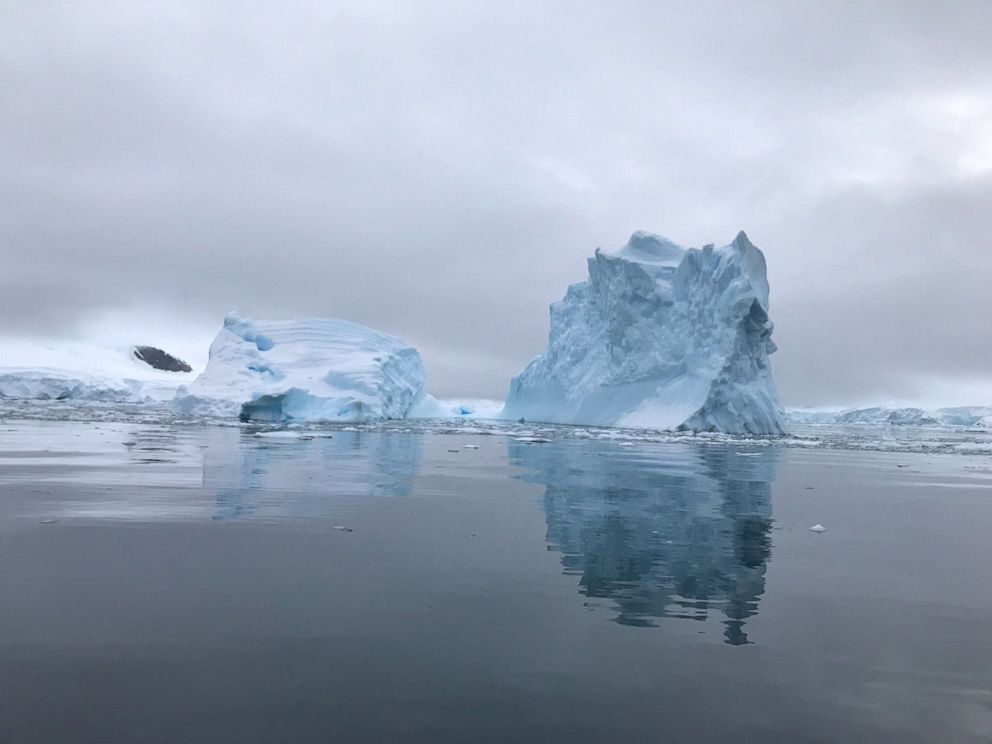
ABC News joined Ari Friedlander and a team of researchers in Portal Point to search for humpback or possibly minke whales to collect samples.
"We want to be able to biopsy, and fly our drone over them to look at body condition and size," Friedlander told ABC News.
The biopsies can indicate the population of the animal’s group, the sex of the animal, if female, whether the animal is pregnant, as well as baseline data on contaminant levels the animal is carrying, Friedlander said.
These marine biologists have come from all over the United States to Antarctica to study the pressures facing the humpback and minke whale population.
The biopsy samples are taken using a crossbow, sterilized after each use. When the biopsy makes contact, the researchers say it doesn't hurt the whales.
"This is the tip that will collect the skin and the blubber sample from the whale, you can see it will penetrate in about an inch or inch and a half into the animal," Friedlander explained. "We’ve been sampling since last November, getting the body condition and sex ratio of animals that are around here now is really important."
After spending several hours in the biting cold, the researchers headed back to the ship's lab to process the biopsy samples they collected.
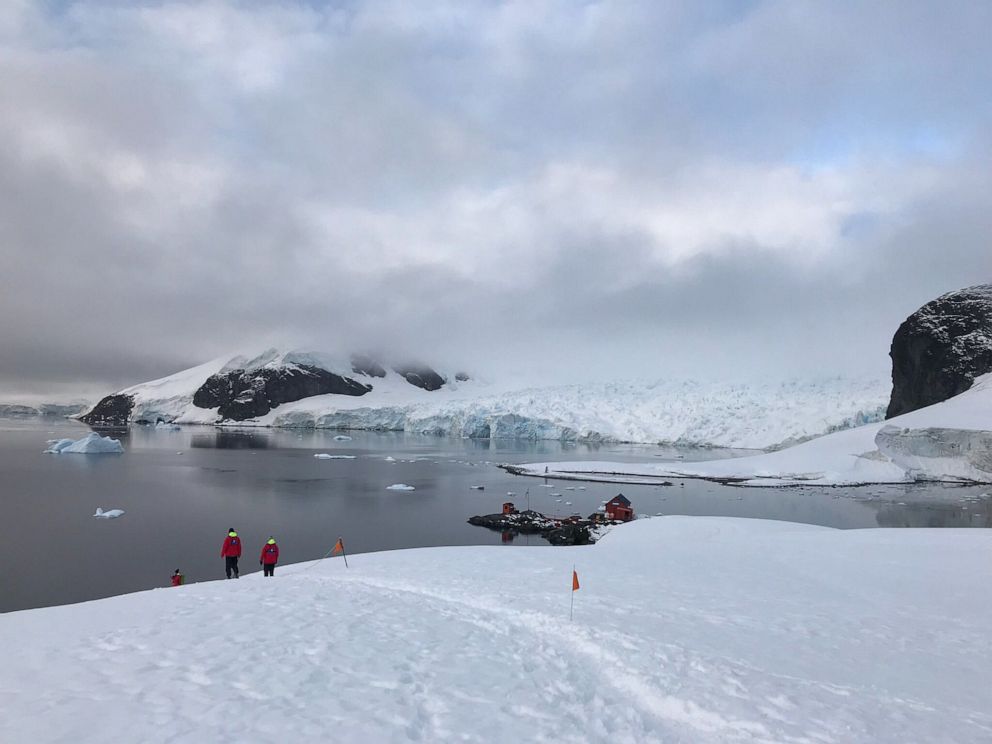
Samples like these have already revealed that plastics, heavy metals and even flame retardant have made their way into the whales’ bodies. The tendrils of man stretching even here, to the seemingly pristine and remote waters of Antarctica.
Smaller "sub samples" are taken into a freezer to travel back to California.
Their research is already yielding results. A recent report by the WWF highlights that whales in the Antarctic are facing increased pressures due to commercial krill fisheries and climate change.
"We’re really racing against the clock in a lot of ways to generate a baseline for how these animals behave and how healthy they are… we're really trying to play catch up here," Friedlander said. "These animals are already compromised in a big way."
"We need to be down here doing this right now, because we can't get back data," he added.
These creatures are important to humans, Friedlander explained, because "they represent the health of an ocean ecosystem to be able to have enough food to support a whale, let alone a population of whales."
"All of these things for motion -- physics and chemistry and sunlight -- have to combine together and to promote life to promote food being there," he said. "As citizens of the planet, regardless of where you live, we have an obligation to let things be and to let things be in a way that is unencumbered by our activities."
A landmark report released by the U.N. revealed that humans are already altering the world at an unprecedented pace – over 1 million plant and animal species are now at risk of extinction.
In the peninsula, many penguin populations are already on the decline. The loss of sea ice is affecting their primary food source – krill.
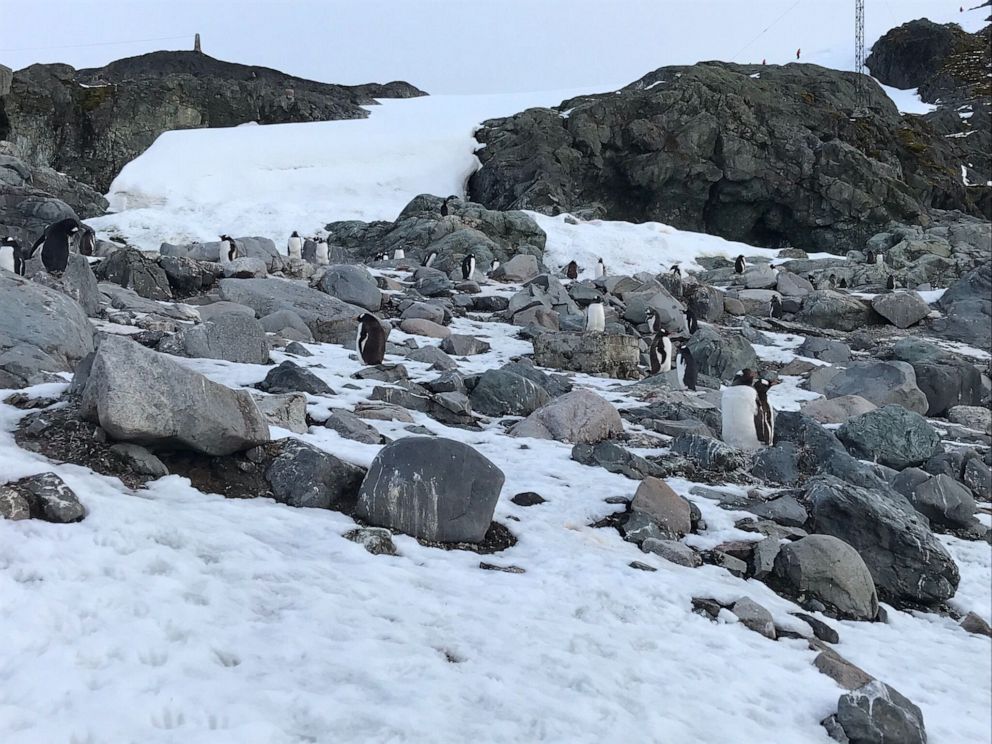
Through funding from the WWF, researchers are now using the latest technologies available, from satellite tags to drones, in determining how the decline in krill is affecting the whale population.
A team from Duke University’s Marine Robotics Lab is putting that technology into action.
Hoping to study humpback whales from the air, the team traveled to Paradise Bay with drones containing one-of-a-kind technology, designed to withstand brutal Antarctic conditions. It provides the team with invaluable insight into the lives of these mysterious creatures.
"From the pictures we can actually measure them, and that can tell us how long they are, how fat they are, how they are growing," KC Bierlich, a PhD student at Duke University, told ABC News.
So far, the numbers are encouraging: unlike most whale species, humpback populations are on the rise.
They were once nearly hunted to extinction, but have since rebounded thanks to a 1980 moratorium on commercial whaling.
"One of the primary things that I’m really interested in is looking at the recovery of these animals from the industrial whaling era," Logan Pallin, a PhD student at UC Santa Cruz, told ABC News.
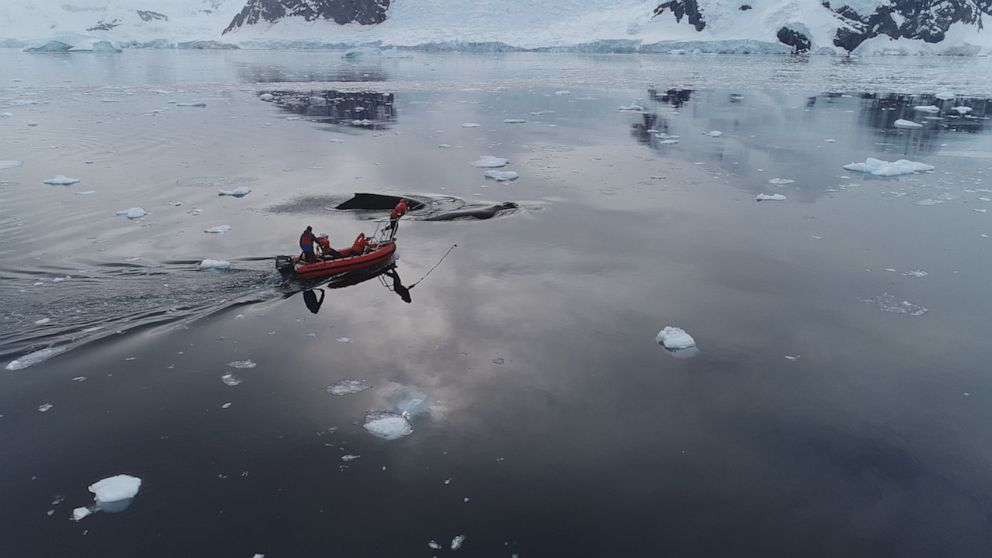
The team set up one of their most crucial research technologies – tagging the giants with a tracking device.
"Essentially what will happen is… there’s a big long carbon fiber pole, with a cradle on the end of it, so the tag will sit in the cradle and they will quietly approach the animal and get close enough," said Julian Dale, lead engineer at Duke Marine Lab. "Essentially we’re just slapping them on the backs, so it’s a gentle slap and the tag will stick on the animal."
The tagging team inched closer to the whales, but approaching them before they wake up and dive away proved to be a great challenge.
The whales dove beneath the surface each time the tagging team got within range.
The next day, the researchers tried again. It was their last chance as winter draws near and the water will soon turn to ice.
The drone team placed their camera in the sky, but as the team inched closer to a group of sleeping humpbacks, the animals were startled by the boat.
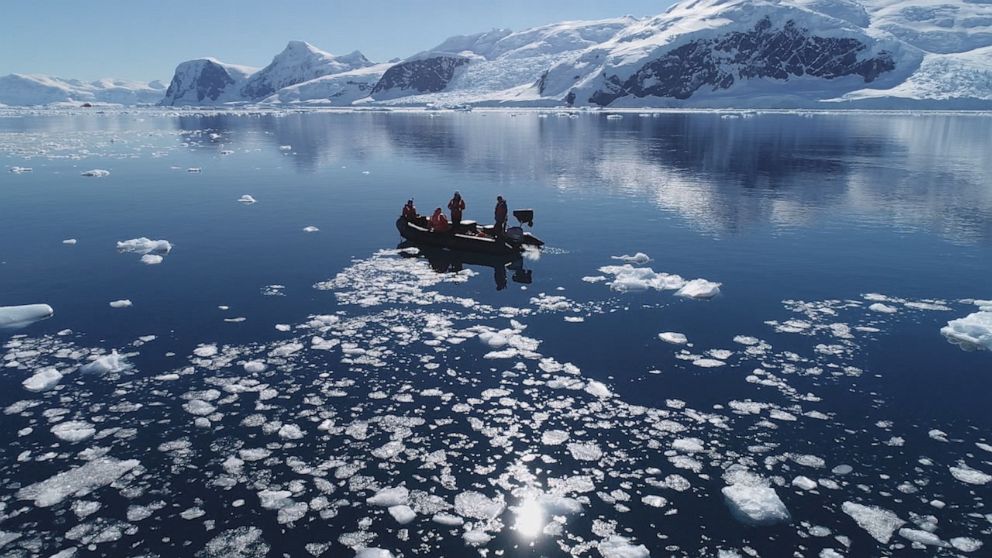
In a rare display, one began breaching. Unable to tag this group of whales, the biologists moved on.
"We’ll that was exciting, not very useful for science but awesome… to see," Friedlander said.
Soon the team spotted another pod of whales, but was met with sore disappointment when they were unable to tag them.
Tagging is critical to the team’s research. And this bay is one Friedlander has returned to many times throughout the years.
He fondly calls Whilhelmena Bay "magical," recalling when he and his team traveled there 10 years ago and discovered a "prey patch or a krill patch" that measured over 2 million tons, as well as about 500 humpback whales.
"Since then… we’ve tried to understand where krill distribute themselves at different times of the year. It’s great for us to study the ecology of the system, but it’s also really good because it tells us the critical places for these animals," Friedlander said. "And if we need to set up Marine Protected areas and keep things like commercial fishing out of them, we know exactly where those places are every year."
The tag is readied and they move forward once more. The team is finally able to tag a whale in what appeared to be a mother and calf pair.
The tag will stay on, capturing data for the researchers. The device, equipped with a camera, also provides them with a whale’s eye view of the world.
Video from the tracker shows the whale waking from sleep and starting to feed, krill moving past the camera.
"What we’re doing is combining the tag information that’s on the back of the whale with the imagery from the drones… combined, we can get a really good picture of the ecology of whales in this area," Johnson explained.
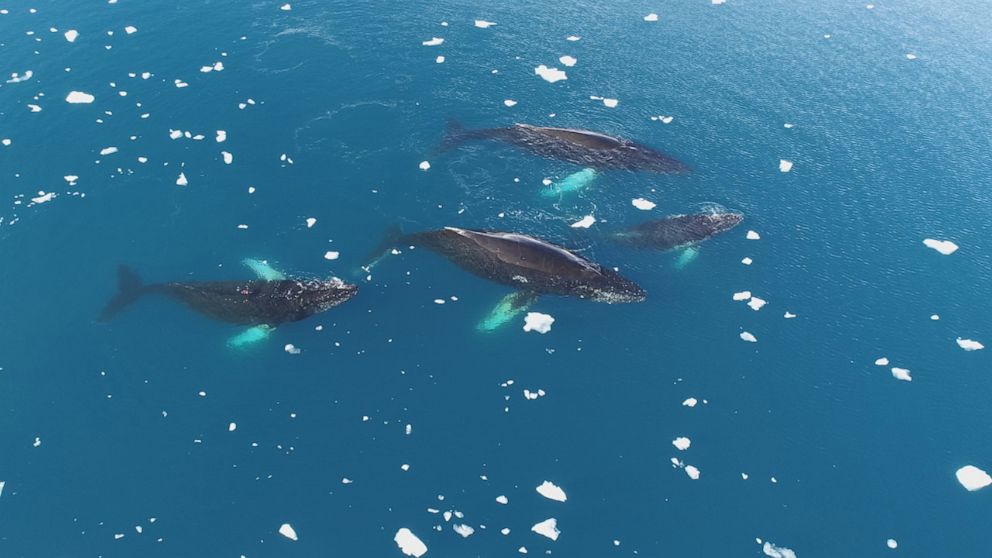
Johnson has been instrumental in taking the research data and turning it into policy. Their goal is to protect 30% of the oceans surrounding Antarctica by 2030.
"Time is of the essence because a recent report by the Intergovernmental Panel on Climate Change said we have about 12 years to really reduce our emissions," Johnson said. "We have 12 years to, to really fight the impact of climate change."
The Antarctic treaty was signed nearly 60 years ago, designating the continent as a natural reserve for peace and science. Since then, it’s been a place where we come to determine the health of the world.
The Ukrainian Research Station on the west coast of Antarctica is one of the places where earth science is recorded. It started as a British base that was sold to the Ukrainians for a pound so they could continue the climate research.
In 1985, scientists discovered a hole in the ozone layer here. "Nightline" shed light on it in 1992, becoming the first to broadcast live from Antarctica.
Since then, the hole in the ozone has recovered significantly and is on its way to healing completely, Johnson said.
"It is one of the biggest, success stories that we have for nature," Johnson said. "I’m hopeful that we can fight climate change both here and at home."
That ambition is one that unites scientists and expedition leaders alike.
Eva Molin Westerholm, program coordinator for One Ocean Expeditions, says she hopes that travelers to Antarctica like herself will "realize the only change we can do is at home."
Making a difference to this place from thousands of miles away might seem impossible. But the recovery of the humpback whale is a testament to what can be done to save our planet, wherever we are.




